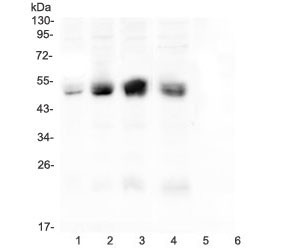Cookie preferences
This website uses cookies, which are necessary for the technical operation of the website and are always set. Other cookies, which increase the comfort when using this website, are used for direct advertising or to facilitate interaction with other websites and social networks, are only set with your consent.
Configuration
Technically required
These cookies are necessary for the basic functions of the shop.
"Allow all cookies" cookie
"Decline all cookies" cookie
CSRF token
Cookie preferences
Currency change
Customer-specific caching
FACT-Finder tracking
Individual prices
Selected shop
Session
Comfort functions
These cookies are used to make the shopping experience even more appealing, for example for the recognition of the visitor.
Note
Show the facebook fanpage in the right blod sidebar
Statistics & Tracking
Affiliate program
Conversion and usertracking via Google Tag Manager
Track device being used

| Item number | Size | Datasheet | Manual | SDS | Delivery time | Quantity | Price |
|---|---|---|---|---|---|---|---|
| NSJ-R30950 | 100 µg | - | - |
3 - 10 business days* |
755.00€
|
If you have any questions, please use our Contact Form.
You can also order by e-mail: info@biomol.com
Larger quantity required? Request bulk
You can also order by e-mail: info@biomol.com
Larger quantity required? Request bulk
0.5mg/ml if reconstituted with 0.2ml sterile DI water. Coxsackie virus and adenovirus receptor is... more
Product information "Anti-CAR Coxsackie Adenovirus Receptor"
0.5mg/ml if reconstituted with 0.2ml sterile DI water. Coxsackie virus and adenovirus receptor is a protein that in humans is encoded by the CXADR gene, also known as CAR, CVB3-binding protein, and Coxsackievirus B-adenovirus receptor. The cDNA encodes a predicted 365-amino acid polypeptide that contains a single transmembrane domain and is a member of the immunoglobulin superfamily. By Northern blot analysis, the highest expression of 1.4-kb and 6-kb transcripts are in pancreas, brain, heart, small intestine, testis, and prostate, lower expression in liver and lung, and no expression in kidney, placenta, peripheral blood leukocytes, thymus, and spleen. In comparison, mouse CAR showed highest expression in liver, and lower levels in kidney, heart, lung, and brain. The protein encoded by this gene is a type I membrane receptor for group B coxsackie viruses and subgroup C adenoviruses. Pseudogenes of this gene are found on chromosomes 15, 18, and 21. CAR is strongly expressed in the developing central nervous system. It functions as a homophilic and also as a heterophilic cell adhesion molecule through its interactions with extracellular matrix glycoproteins , such as: fibronectin, agrin, laminin-1 and tenascin-R. Protein function: Component of the epithelial apical junction complex that may function as a homophilic cell adhesion molecule and is essential for tight junction integrity. Also involved in transepithelial migration of leukocytes through adhesive interactions with JAML a transmembrane protein of the plasma membrane of leukocytes. The interaction between both receptors also mediates the activation of gamma-delta T-cells, a subpopulation of T-cells residing in epithelia and involved in tissue homeostasis and repair. Upon epithelial CXADR-binding, JAML induces downstream cell signaling events in gamma-delta T-cells through PI3- kinase and MAP kinases. It results in proliferation and production of cytokines and growth factors by T-cells that in turn stimulate epithelial tissues repair. [The UniProt Consortium]
| Keywords: | Anti-CAR, Anti-hCAR, Anti-CXADR, Anti-HCVADR, Anti-CVB3-binding protein, Anti-Coxsackievirus B-adenovirus receptor, Anti-Coxsackievirus and adenovirus receptor, CAR Antibody Coxsackie Adenovirus Receptor |
| Supplier: | NSJ Bioreagents |
| Supplier-Nr: | R30950 |
Properties
| Application: | WB |
| Antibody Type: | Polyclonal |
| Conjugate: | No |
| Host: | Rabbit |
| Species reactivity: | human, mouse, rat |
| Immunogen: | Amino acid sequence from the C-terminus of human Coxsackie Adenovirus Receptor (YSKTQYNQVPSEDFER) |
| Format: | Purified |
Database Information
| KEGG ID : | K06788 | Matching products |
| UniProt ID : | P78310 | Matching products |
| Gene ID | GeneID 1525 | Matching products |
Handling & Safety
| Storage: | +4°C |
| Shipping: | +4°C (International: +4°C) |
Caution
Our products are for laboratory research use only: Not for administration to humans!
Our products are for laboratory research use only: Not for administration to humans!
Information about the product reference will follow.
more
You will get a certificate here
Viewed







